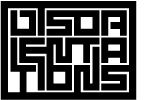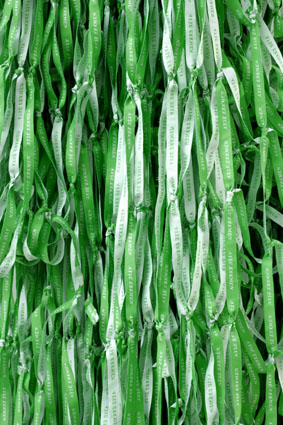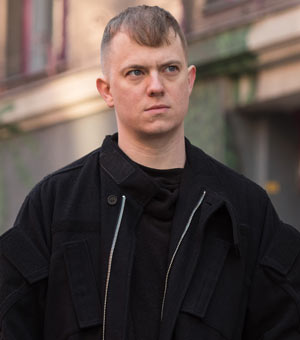Ayse Erkmen at Hamburger Bahnhof, Berlin
by Travis Jeppesen on October 6, 2008
If minimal art has any importance, it’s in making us notice things that we wouldn’t otherwise. Ayse Erkmen has this figured out. She gives us an art that is barely there. What is it that Gertrude Stein once wrote – there is no there there. Or was it someone else? It doesn’t matter who it was: this is how you feel when looking at Ayse Erkmen’s art.
Companions is what she calls this, her latest exhibition. But it’s also the name she gives to her art. The sense of traveling, of a present continuous, and how dizzying that is… You enter through Portiport, a metal detector that probably beeps when you pass through it. The museum guard inspects your ticket. There are signs everywhere, warning you to enter the exhibition at your own risk, and so you are uneasy. The artist wants to threaten the spectators, it seems. But what she really means is that if you don’t look hard enough, you won’t see anything. Or at least, not enough. It is so easy to overlook; thus, let this be a lesson in looking.
The fluorescent lights hanging low from the ceiling in the first room are the most threatening thing. These lights so cold and institutional. Now you can touch them. You are afraid that if you hit one of the wires you will be electrocuted. Perhaps this is what the warning means. Sparks will fly, power will short-circuit, the entire building will be shrouded in darkness. And you will fry. Electric liquid will leak out of your nostrils, your other orifices. No, better not to touch anything.
In the next room there seems to be nothing. This seeming so raw and dignified, you don’t trust it. And so you stand there and wait.
You wait and you stare. Something shifts, a slight change is affected. You’re waiting for something more, it doesn’t come. It is the wall. You go up to it, see that it isn’t really a wall, but a panel. The panel moves – almost imperceptibly, white against white – changing the dynamics of the space ever so slightly. It can give you a headache, this blank ponderousness it induces, so you leave the room, cross the black carpet in the corridor, wind your way up the stairs, past the green and white ribbons upon which Ayse Erkmen has printed her own name.
A word about the ribbons. The ironic striving for a signature is a bit overstated here – that is to say unwarranted. Art that comments on art in general must have something further, beyond the slightness of that commentary, in order to entrap us in the guise of its forepresence. Erkmen doesn’t always get it right. You understand that it’s deliberate in its execution, but it’s still not careful. Another example of this is her usage of photos taken from digital image banks.
I guess I’m resistant to conceptual strategies because it’s so easy in these times we live in to be schooled. What isn’t innate is cheating. Contextual appropriation and all that nudge-nudge wink-wink that comes with it. It lends itself to easy reading – something that every work should defy. Erkmen isn’t exactly a newbie; she should know this and maybe she does.
Still, the failure of certain works included is more than made up for in the upstairs room. You are immediately relieved of whatever high-minded seriousness there has been so far when the White-Tailed Wildebeest, victim of taxidermy, on wheels, greets you at the entrance.
You move further, into the video room. Safety belts have been strapped around the columns supporting the ceiling, forming a network, a blockade. Beeping sounds from the seventeen video monitors form a sort of accidental-intentional sound installation. Induces the feeling of being in a dangerous – yet protected (the safety belts) – space. The monitors are scattered, big black and blocky, so you are constantly having to walk around them in order to see.
The oddness lies in the sheer array of subjects. In one series of films, three-dimensional animated shapes dance by in a straight line making funny noises. Something you might see on a Saturday morning cartoon. Then you read that the cute little shapes are actually replicas of landmines.
A lion snarls. Its sole gesture is stuck on a loop, making it look like it has some kind of tic.
Erkmen’s most poetic – and therefore most unexpected film is Free Time/Idleness. It consists of a barrage of every day images that hold nothing in common except perhaps movement. A house reflected in a canal, the trembling water; a crow walking along the shore; the interior of a car driving down a highway; a palm tree heaving in the wind. The worship of banality becomes a science. Suddenly, all is redeemed, as you see that we live in a world without good or evil, beauty or ugliness. A world marked by the quiet simplicity of being.



Leave your comment